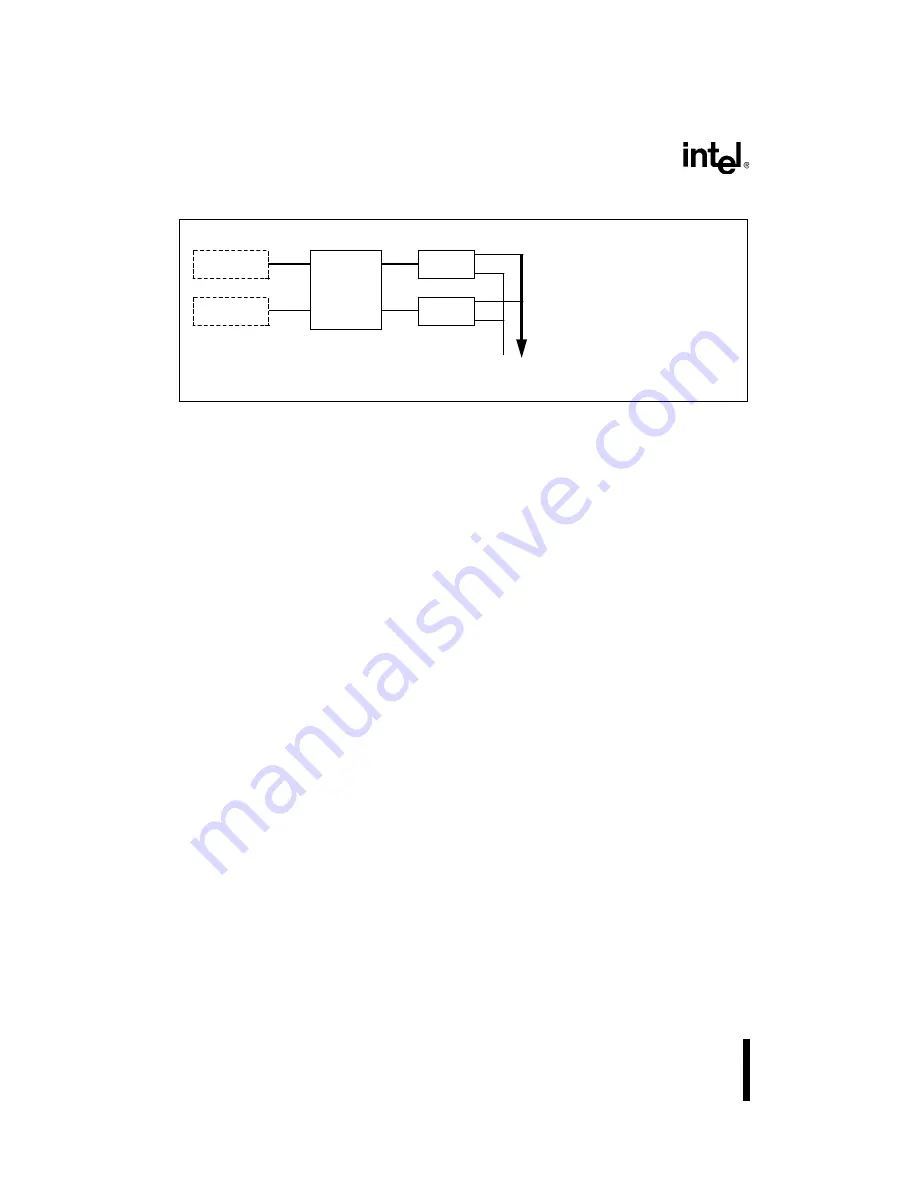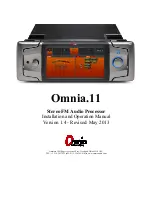
2-8
PENTIUM® PRO PROCESSOR ARCHITECTURE OVERVIEW
There are two types of memory access: loads and stores. Loads only need to specify the memory
address to be accessed, the width of the data being retrieved, and the destination register. Loads
are encoded into a single µop.
Stores need to provide a memory address, a data width, and the data to be written. Stores there-
fore require two µops, one to generate the address, and one to generate the data. These µops must
later re-combine for the store to complete.
Stores are never performed speculatively since there is no transparent way to undo them. Stores
are also never re-ordered among themselves. A store is dispatched only when both the address
and the data are available and there are no older stores awaiting dispatch.
A study of the importance of memory access reordering concluded:
•
Stores must be constrained from passing other stores, for only a small impact on
performance.
•
Stores can be constrained from passing loads, for an inconsequential performance loss.
•
Constraining loads from passing other loads or stores has a significant impact on
performance.
The Memory Order Buffer (MOB) allows loads to pass other loads and stores by acting like a
reservation station and re-order buffer. It holds suspended loads and stores and re-dispatches
them when a blocking condition (dependency or resource) disappears.
2.3.
ARCHITECTURE SUMMARY
Dynamic Execution is this combination of improved branch prediction, speculative execu-
tion and data flow analysis that enables the Pentium Pro processor to deliver its superior
performance.
Figure 2-7. Inside the Bus Interface Unit
MOB - Memory Order Buffer
AGU - Address Generation Unit
ROB - ReOrder Buffer
Mem
I/F
MOB
DCache
From
AGU
To/from
Instruction
Pool (ROB)
Sys Mem
L2 Cache
Summary of Contents for Pentium Pro Family
Page 17: ...1 Component Introduction ...
Page 26: ...2 Pentium Pro Processor Architecture Overview ...
Page 27: ......
Page 36: ...3 Bus Overview ...
Page 62: ...4 Bus Protocol ...
Page 105: ...5 Bus Transactions and Operations ...
Page 126: ...6 Range Registers ...
Page 131: ...7 Cache Protocol ...
Page 135: ...8 Data Integrity ...
Page 148: ...9 Configuration ...
Page 161: ...10 Pentium Pro Processor Test Access Port TAP ...
Page 172: ...11 Electrical Specifications ...
Page 201: ...12 GTL Interface Specification ...
Page 229: ...13 3 3V Tolerant Signal Quality Specifications ...
Page 233: ...14 Thermal Specifications ...
Page 239: ...15 Mechanical Specifications ...
Page 241: ...15 2 MECHANICAL SPECIFICATIONS s Figure 15 1 Package Dimensions Bottom View ...
Page 252: ...16 Tools ...
Page 260: ...16 8 TOOLS Figure 16 4 Generic MP System Layout for Debug Port Connection ...
Page 264: ...17 OverDrive Processor Socket Specification ...
Page 290: ...A Signals Reference ...
Page 320: ...Index ...
Page 328: ......
















































